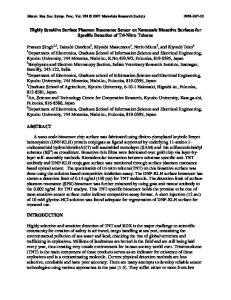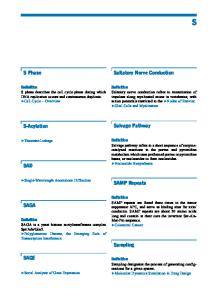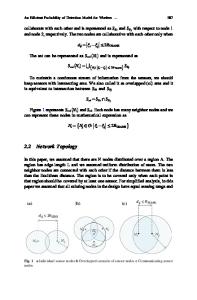Surface plasmon resonance-enhanced photoelectrochemical sensor for detection of an organophosphate pesticide chlorpyrifo
- PDF / 495,946 Bytes
- 6 Pages / 612 x 792 pts (letter) Page_size
- 27 Downloads / 327 Views
Research Letter
Surface plasmon resonance-enhanced photoelectrochemical sensor for detection of an organophosphate pesticide chlorpyrifos Treenet Thepudom, Graduate School of Science and Technology and Center for Transdisciplinary Research, Niigata University, 8050 Ikarashi 2-Nocho, Nishi-ku, Niigata 950-2181, Japan; Materials Science and Engineering Program, Faculty of Science, Mahidol University, 272 Thungphayathai, Ratchathewi, Bangkok 10400, Thailand Chutiparn Lertvachirapaiboon, Kazunari Shinbo, Keizo Kato, and Futao Kaneko, Graduate School of Science and Technology and Center for Transdisciplinary Research, Niigata University, 8050 Ikarashi 2-Nocho, Nishi-ku, Niigata 950-2181, Japan Teerakiat Kerdcharoen, Department of Physics, Faculty of Science, Mahidol University, 272 Thungphayathai, Ratchathewi, Bangkok 10400, Thailand Akira Baba, Graduate School of Science and Technology and Center for Transdisciplinary Research, Niigata University, 8050 Ikarashi 2-Nocho, Nishi-ku, Niigata 950-2181, Japan Address all correspondence to Akira Baba at [email protected] (Received 14 November 2017; accepted 6 December 2017)
Abstract Detection of chlorpyrifos (CPF) using a surface plasmon resonance (SPR)-enhanced photoelectrochemical sensing system is demonstrated in this study. The presence of CPF was detected based on an increase in the short-circuit photocurrent when a sample is injected into the electrolyte at different concentrations. The short-circuit photocurrent signal was enhanced by both localized SPR of the gold nanoparticles and by the effects of grating-coupled propagating SPR. Using the hybrid SPR-enhancement system, CPF detection was achieved at concentrations as low as 7.5 nM. The proposed technique of leveraging a multifunctional photovoltaic effect can be used for a variety of sensing applications.
Introduction In recent years, organophosphate pesticides have been widely used, especially in the field of agriculture. The O,O-diethyl o-3,5,6-trichloropyridin-2-yl phosphorothioate, which is also known as chlorpyrifos (CPF), is one of the organophosphates that is extensively used to protect agricultural products from insects. However, one concern with the use of pesticides is their toxicity to aquatic ecosystems and the direct effects of agricultural discharges on human life.[1–3] CPF is moderately toxic by reaction with a serine residue on acetylcholinesterase (AChE), which inhibits the enzymatic reaction of AChE with acetylcholine chloride. This inhibition directly affects brain development, especially in children.[4] Accordingly, this issue of CPF contamination has aroused interest from many research fields such as environment, medicine, chemical, biology, among others. Hence, numerous scientific approaches to detect CPF have been developed.[5,6] Standard analytical methods can be used for efficient identification of CPF, such as gas chromatography with mass spectroscopy[7,8] or high-performance liquid chromatography.[9–12] However, these methods are known to require highly skilled operators and to be exp
Data Loading...











